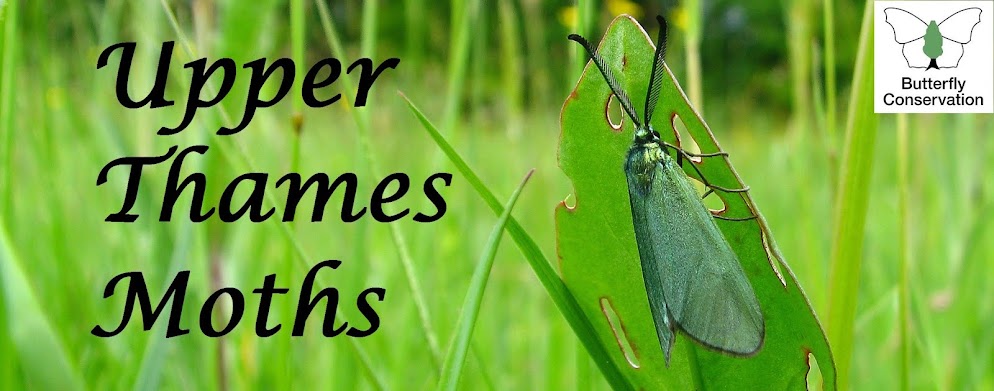We haven't bothered putting the trap out every night for the last few weeks in Wolvercote, Oxfordshire, given the drop in temperatures and the fact that I'm quite often home from work several hours after dusk. When we have done, numbers have been distinctly down, of course; and we're still missing a number of species whose likelihood of showing decreases by the day: no Red Underwings this year, nor any Brick, Yellow-line Quaker or Satellite; and unlike some, we've
never had MdJ... (I'm not sure hoisting our trap up to the level Martin W. showed in a recent photo, in the hope of attracting them, would meet with universal local approval).
However, we have had some handsome autumn species: as well as a nice range of sallows (Sallow itself, plus Barred, Centre-barred and Pink-barred - not all of those are annual for us), there have been several Angles Shades, a lovely Green-brindled Crescent and a Large Wainscot, all of them very nice to see. And although we won't, I think, reach 350 species, which I had hoped for earlier this year, the 340 we're at is considerably better than last year's 317 - and that in a year which, by all accounts, hasn't exactly been a vintage one.
 |
| Angle Shades, 7/10/16 |
 |
| Green-brindled Carpet, 14/10/16 |
 |
| Large Wainscot, 16/10/16 |
I'm assuming, by the way, that both the below individuals are Beaded Chestnut, but if anyone can say otherwise, please do let us know!
 |
| Presumed Beaded Chestnut, 7/10/16 |
 |
| Another presumed Beaded Chestnut, 8/10/16 |
Steve and Xander Goddard






Hello Steve & Xander, the first queried moth is certainly Beaded Chestnut (they come in a variety of guises, some with very few distinguishing marks). I'm fairly sure the second is too but the image is rather dark.
ReplyDeleteI expect Merveille du Jour will find its way to your garden eventually. There's only one small oak anywhere near me in Westcott and it still appears here regularly each year, so I'm sure they do wander away from the food-plant. It is a moth which doesn't always enter the trap though, so it is worth searching the surrounding vegetation.
Thanks, Dave: I think we'll assume it's Beaded Chestnut in both cases. MdJ would be very nice -- it's become especially clear to us in the course of this year how useful it is to check vegetation, and I suspect species we've found that way probably account for the bigger species count this year compared to 2015.
ReplyDelete